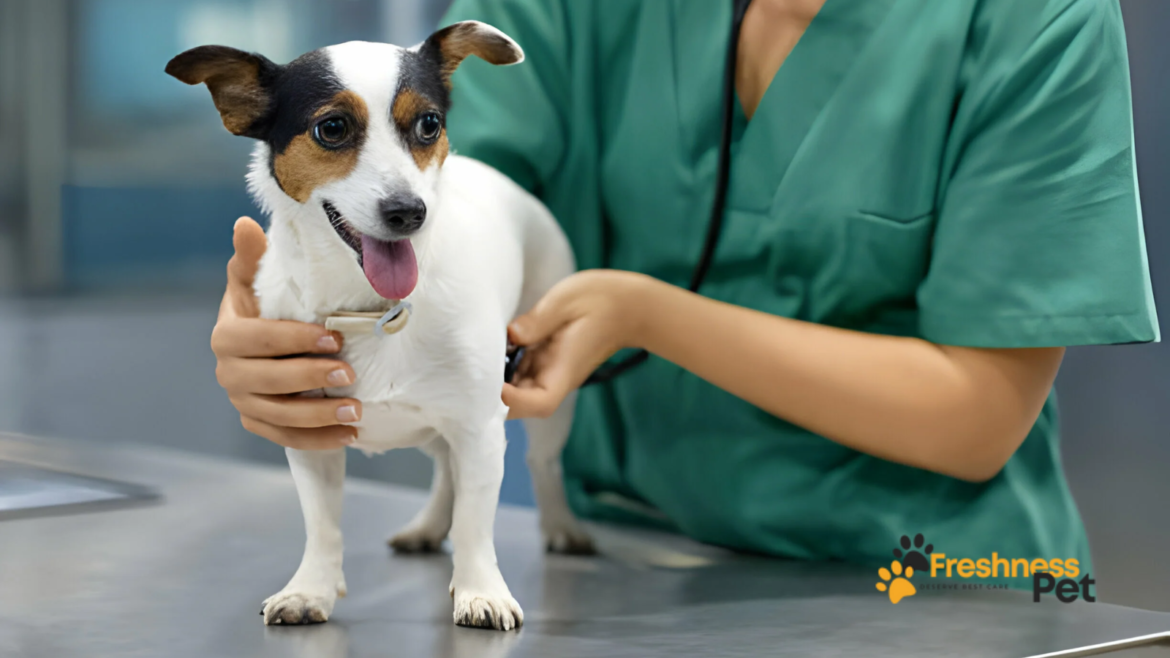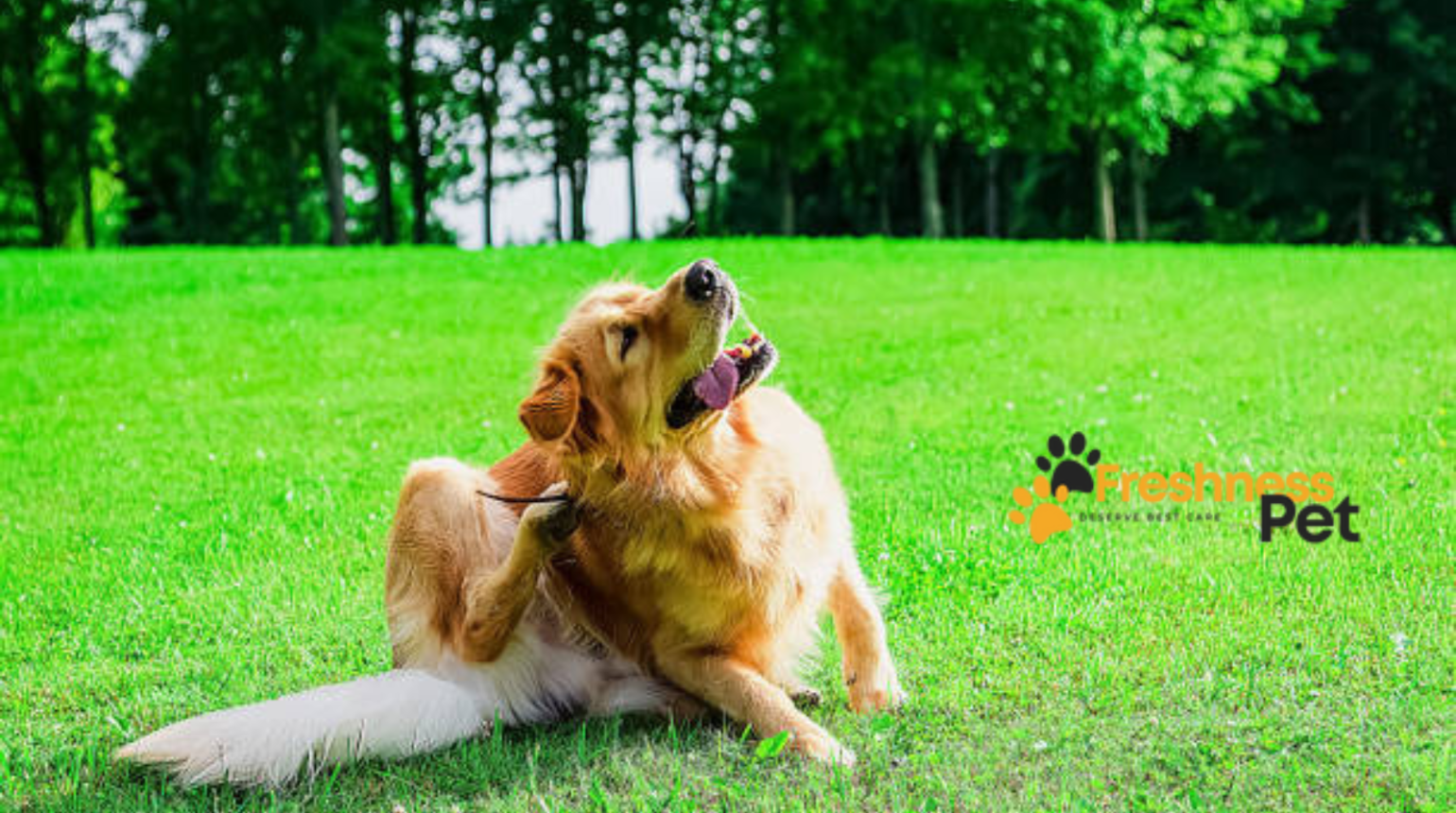As a loving dog owner, every day you keep your pet happy and healthy and clean its house. Urinary tract infections (UTIs) are also known as bladder infections in your pet worries you. Your dog is playful but it struggles to go to the bathroom and experiences discomfort. In this article, we will discuss the main causes behind bladder infections, how you can spot infection and how you can help your dog feel better.
What is a Bladder Infection in Dogs?
Your dog suffers from bladder infection when bacteria enter its urinary system. The urinary system of every dog contains the bladder and the tubes which collects urine and then excretes it out of its body. Bacteria when accumulated in the dog’s body cause irritation and infection in the urinary tract. It is important for you to spot and treat the bladder infection in your furry friend to keep it healthy.
How to Spot a Bladder Infection in Your Dog?
You might find it challenging to tell if your dog has a bladder infection because symptoms can be subtle. Sometimes dog’s owner find it difficult to identify if their pet dog has a bladder infection or not. We are providing you some signs that you may look for:
1. Frequent Urination:
If you notice that your dog urinates more often than usual then frequent urination may indicate that your dog needs medical attention.
2. Your dog defecates inside the house:
Although your dog is well trained and knows the proper way to go outside for bathroom needs. But recently you notice that your dog urinates on the living room rug and even on the couch where it mostly sleeps. You allow your dog for regular walks and also provide the opportunity to go outside. But your well-behaved dog defecates inside the house even though it is previously house-trained, which indicates that it has a bladder infection in the urinary system.
3. Blood in Urine:
While your dog passes the urine, you notice blood or pinkish color in it’s urine which signals a problem in the urinary system.
4. Painful Urination:
Your dog is in pain and it becomes uncomfortable and sometimes cries when it passes the urine.
5. Unusual Odor:
If the smell of your dog’s urine is pungent and unpleasant then it gives you a hint that it is experiencing bladder infection.
6. Licking Genital Area:
If your dog licks its genital part frequently then this behavior indicates that it is currently feeling irritated in its private area.
7. Change in Urine Color:
If the urine of your dog is cloudy or dark-colored than usual, this signals an infection in its urinary system.
8. Increased Thirst
Your dog is dehydrated every time and drinks more water than usual. The reason behind drinking more water is that your dog tries to flush out the infection.
9. Behavioral Changes:
As a pet’s owner, you feel the vocalization of your dog every time it barks to express various emotions or needs. However you notice that your dog barks in a high pitched sound. Moreover it produces noise continuously with repetitive sounds which indicates that your dog is tired. This tiredness may occur due to bladder infection and your dog feels restless every time.
Causes of Bladder Infection in Your Canine Companion
Here are several causes that identifies bladder infection in your pet:
1. Bacteria:
Bacteria when entered into the urinary tract of your dog from its skin causes bladder infection. Many times dogs live near the garbage areas which contain toxic food contents which some dogs eat. This ingestion of garbage by your dog may harbor bacteria in its urinary system which irritates the bladder. Similarly sometimes bacteria come into contact with its skin or paws which becomes the cause of bladder infection later on. You may also have seen that bees also come into contact with the dogs that transfer the bacteria from skin into the urinary tract.
2. Food with Excessive amount of Calcium
If you regularly feed your dog with dry meat, milk and water and you worry about bladder infections in your canine friend. You should be careful that many other factors may also contribute to these infections.
3. Diet Composition
While dry meat and milk are healthier foods for your dog, they need to be balanced with other nutrients. If you offer a diet to your dog that contains too much calcium, then it can affect the urinary health of it. Moreover it contributes to the formation of bladder stones.
4. Hydration
Sometimes your dog drinks adequate water which is vital for the good health of the urinary system. Due to insufficient water intake, the urine becomes concentrated which increases the risk of stone formation.
Unhygienic Environment
If the area where your dog lives is unclean then it can expose your canine friend to bacteria, which leads to infections in the bladder.
5. Urinary Tract Issues
As the urine becomes concentrated then stones are formed in the surroundings of the urinary tract, which causes inflammation and swellings in the tract. In this way the urinary tract becomes puffy due to swelling and leads to a medical condition known as cystitis. In cystitis, the bladder wall becomes thickened and disrupts the urinary system.
6. Hormonal Imbalances
If your dog is diabetic, then its body produces excessive urine which impacts the urinary health of your dog. While your dog experiences diabetes, the blood sugar levels heightens which increase glucose in the urine. In this way your dog releases urine in excessive amounts which put extra strain on its bladder. Now as the dog passes urine excessively than usual which leads to dehydration. With the passage of time, the elevated levels of glucose changes the structure of the bladder and it now becomes more susceptible to infections.
How Do Vets Diagnose Bladder Infections?
Vet diagnoses a bladder infection in a dog with physical examination techniques:
1. Palpation:
The vet gently palpates the abdomen and checks the tenderness particularly in the lower abdomen where the bladder is located. If the size of the bladder is larger than normal then it may suggest an infection in the urinary system.
2. Auscultation:
Although the primary sounds the vet listens for are related to the gastrointestinal system which are loud, frequent and high pitched. These abnormal sounds are pronounced as “borborygmi”. These sounds indicate gastrointestinal motility which may indicate diarrhea. However sometimes abnormal sounds are faint which indicates decreased gastrointestinal motility. In case a vet does not hear bowel sounds then it indicates that there is no movement in the intestines.
3. Urinalysis:
Urinalysis is a key test which diagnoses a bladder infection in your dog. Now the vet will collect the sample of your dog’s urine in a clean container. Once the lab technician has the dog’s urine, he then examines it using a special stick which is called a dipstick. This dipstick changes color to show the amount of protein and sugar present in the urine. Now the vet looks at the urine under a microscope to find any tiny particles or cells. If he finds blood in the urine which is often reported as negative, then the vet advises prescription accordingly. By conducting the urinalysis, he understands whether the dog has any health issues in kidneys, bladder and other parts of the urinary system.
4. Ultrasound:
In order to perform the ultrasound, your vet first places the dog on an examination table and administers a mild sedative. He then applies a special gel to the dog’s belly which helps the ultrasound probe make good contact with its skin. In this way, the ultrasound produces clear images by moving the ultrasound probe over the dog’s abdomen. It then sends sound waves into the body and then these waves bounce off the bladder, which then creates images on a screen. Once the vet has performed the procedure for ultrasound, he then looks at these images to check for signs of infections. The signs of infections typically include thickened bladder walls and abnormalities in the shape of the bladder.
5. Urine Culture:
The vet conducts the urine culture test to identify the type of bacteria which is causing bladder infection. In order to perform this test, he forwards the urine sample to a vet laboratory for a culture. In the lab, the lab technician places the sample of urine on a special growth medium and allows the bacteria to grow on it. Typically it takes about 2 to 3 days for the bacteria to grow in culture medium and be identified in the laboratory. Once the bacterial culture has grown in that plate, then the lab technician isolates and identifies the specific types of bacteria present in it.
6. Blood Tests:
Blood tests also identify any underlying health issues in your dog which contributes to infection in its bladder. To perform the blood test, the vet collects the blood sample and sends it to the laboratory for examination. Once the final reports for blood test are issued, then the vet checks whether the number of white blood cells, red blood cells and Hemoglobin levels are normal or elevated. For white blood cells (WBCs), the normal range is between 6,000 and 17,000 cells per microliter of blood. If there are more than 17,000, it means there’s an infection or inflammation. Red blood cells (RBCs) should be between 5.5 and 8.5 million cells per microliter, and if there are more than 8.5 million, it signals a medical problem. Hemoglobin levels should be between 12 and 18 grams per deciliter, and higher levels indicate dehydration in your dog. Platelet counts should be between 150,000 and 400,000 per microliter, and more than 400,000 might indicate certain conditions. Finally, blood glucose levels should be between 70 and 130 milligrams per deciliter, with higher levels indicating diabetes in your dog.
How to Treat a Bladder Infection in Dogs
Treating a bladder infection in your canine friend typically involves several steps:
1. Antibiotics:
Once all the medical tests have been finalized then your vet will prescribe antibiotics that kill the bacteria which is the primary cause of infection. You must make sure to consult with your vet to give your dog the full course of medicine. Following are the most common antibiotics which are administered orally in the form of tablets and capsules to the dogs:
- Amoxicillin
- Cephalexin
- Enrofloxacin
- Trimethoprim-sulfamethoxazole
- Doxycycline
2. Increased Water Intake:
As a dog’s owner, you should motivate your dog to drink more water to help excrete out the infection. You can prepare the broth by boiling the meat in water and serving it to your dog. Dog Owners boil chicken or beef meat in a large pot of water and then add a few vegetables for extra flavor. After boiling the meat, they use a sieve to strain the broth and separate the soup from bones and meat. Your dog will enjoy drinking the broth or water to prevent it from dehydration.
3. Dietary Adjustments:
As your dog is suffering from bladder infection, therefore you must follow a diet schedule to support its recovery. You can divide the diet schedule into a chart that starts from Monday till Sunday. For Monday, you may serve plain boiled chicken breast and white rice for breakfast. Canned pumpkin may also be mixed with boiled chicken for lunch. For Dinner, you should offer boiled Turkey breast along with cooked sweet potato. Similarly you can serve boiled fish with steamed broccoli to your dog. Your dog may like to eat boiled sweet potato and canned pumpkin every time you serve them.
Note: It is prohibited to serve Artificial Sweeteners (e.g., xylitol) and canned foods which contain high volume of sodium. Chilli, Curries, Tomatoes, Garlic and Onions may cause irritation in the bladder and are toxic for the dogs.
Conclusion
In summary, bladder infections in dogs can cause discomfort for your canine friend, but with quick diagnosis and treatment,they may recover soon. Throughout the article we have explained the symptoms, causes, and treatments of UTIs for the dogs. The treatment plan can help keep your pet healthy and prevent it from infections. Moreover, you must visit the vet regularly and serve your dog with good hygiene are the key factors in preventing bladder infections. If a dog’s owner suspects his dog has a bladder infection then he must contact the vet for the best care.



